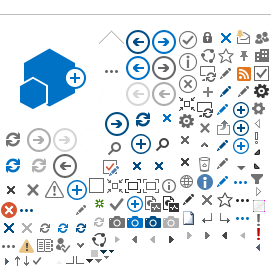|
Useful For
|
SRY/XY genotyping is a targeted molecular assay to determine the presence of Y-chromosomal material—primarily the SRY (Sex-determining Region Y) gene—for sex determination and as an aid in the work-up of disorders/differences of sex development (DSD), ambiguous genitalia, and select prenatal indications (e.g., discordant ultrasound vs. NIPT; confirmation of fetal sex in sex-linked disease counseling). In postnatal settings it supports evaluation of suspected sex chromosome anomalies (e.g., 46,XX testicular DSD due to SRY translocation; 46,XY DSD with SRY variants or absence).
|
|
Method name and description
|
Qiagen Multiplex PCR targeting:
- SRY (qualitative presence/absence)
- Internal controls: a Y-chromosome marker (e.g., AMELY or ZFY) and an X-chromosome/autosomal control (e.g., AMELX or ZFX/housekeeping gene) to verify DNA quality and detect allele dropout.
- Amplicons are resolved by capillary electrophoresis, with size-based discrimination of targets.
- Positive, negative (no-template), and extraction controls included per run.
|
|
Clinical information
|
Prevalence
Not applicable (assay is diagnostic/confirmatory rather than population screening).
Inheritance
SRY resides on the Y chromosome (Yp11.2). Presence/absence and integrity of SRY influence testicular differentiation. Rare translocations of SRY onto the X chromosome or autosomes may occur; SRY sequence variants are uncommon but reported.
Cause
Presence of Y-chromosomal material typically yields SRY positivity.
SRY may be absent in individuals with 46,XX or in rare 46,XY cases with SRY deletion/variant.
Mosaicism (e.g., 45,X/46,XY) may result in low-level SRY signal depending on fraction of Y-positive cells.
|
|
Aliases
|
SRY
TDF
SRY1
Sex-determining Region Y protein
HMG-box gene on Y chromosome
|
|
|
Specimen type / Specimen volume / Specimen container
|
|
Specimen Type
|
Specimen Volume
|
Container/Tube
|
|
Whole Blood
|
Adult: minimum 3 mL
Child : minimum 1ml
|
Lavender top (EDTA)
|
|
DNA
|
minimum 2-3 µg
|
2ml sterile cryovial
|
|
|
Collection instructions / Special Precautions / Timing of collection
|
Note: This is a "one-time " test. This means that the test is typically performed once and does not need to be repeated unless there are specific circumstances or changes in health status that warrant it.
Patient Preparation: Previous allogeneic bone marrow transplant can yield discordant leukocyte DNA; note clearly in clinical details.
Specimen Type: Whole blood or DNA from CAP/ISO or similar accredited laboratories is acceptable.
|
Specimen Type
|
Container/Tube
|
Volume Required
|
Patient Preparation / Notes
|
|
Whole Blood (EDTA)
|
Lavender-top EDTA tube
|
Adult: ≥3 mL Child: ≥1 mL
|
No fasting required. Note prior bone marrow transplant or transfusion.
|
|
Extracted DNA
|
Sterile microcentrifuge tube
|
≥50 ng/µL concentration; minimum 20 µL
|
DNA must be from patient’s own tissue; provide extraction method if from external lab
|
|
|
Relevant clinical information to be provided
|
Submit With Order
- Clinical indication and relevant history (DSD evaluation, prenatal indication, prior karyotype/CMA/NIPT).
- Family history (sex chromosome anomalies/DSD).
- Document prior allogeneic bone marrow transplant (may confound results).
- Genetic counseling and informed consent are recommended.
|
|
Storage and transport instructions
|
The specimens should be transported to Central Processing (CP) in the Qatar Rehabilitation Institute (QRI), 3rd floor, HBK MC in cool box with ice pack.
|
Specimen Type
|
Container/Tube
|
Volume Required
|
Storage Before Transport
|
Transport
Conditions
|
|
Whole Blood (EDTA)
|
Lavender-top EDTA tube
|
Adult: ≥3 mL Child: ≥1 mL
|
Room temperature ≤24h; 2–8 °C preferred if delay expected
|
2–8 °C (refrigerated), upright, avoid shaking; ≤72 hours
|
|
Extracted DNA
|
Sterile microcentrifuge tube
|
≥50 ng/µL concentration; minimum 20 µL
|
–20 °C or lower for long-term storage
|
2–8 °C (preferred) or Room Temp ≤5 days if stabilized;
|
|
|
Specimen Rejection Criteria
|
- Specimens will be rejected under the following conditions:
- Wrong specimen container.
- Leaking or contaminated container.
- Unlabeled specimen.
- Mislabeled specimen.
- Improperly filled request form.
- No specimen types.
- No physician stamps.
- No clinical history/data documented.
- The information written on the tube does not match the data on the request form, and there is no response when calling the ward for correction.
- No request/electronic order received.
- Tests are not available, even in external reference laboratory.
- Excessive hemolysis or clotted blood.
- Delayed specimens that are judged unsuitable for analysis.
- Specimen received with wrong date and time.
|
|
|
Biological reference intervals and clinical decision values
|
Reference Values
- SRY detected with Y-marker detected (and X control detected): Consistent with presence of Y-chromosomal material (typically XY or mosaic with Y).
- SRY not detected with Y-marker not detected (X control detected): Consistent with absence of Y-chromosomal material.
- Discordant patterns (examples):
- SRY detected; Y-marker absent: Possible SRY translocation or primer binding site issues → recommend reflex testing.
- SRY absent; Y-marker present: Possible SRY deletion/variant or assay dropout → recommend reflex testing and sequencing of SRY.
Interpretive Data
An interpretive report will be provided.
Limitations
- Qualitative assay; does not quantify mosaic fractions. Low-level mosaicism may be below detection threshold.
- SRY-negative 46,XY due to SRY deletion, primer site variant, or rare technical issues may yield false-negative SRY with positive Y-marker.
- SRY-positive 46,XX due to SRY translocation will appear Y-positive despite XX karyotype; reflex cytogenetics is required for chromosomal context.
- Prior allogeneic BMT can cause blood DNA to reflect donor sex.
- Assay does not evaluate broader DSD genes or copy-number changes beyond targeted markers.
Reference
- Qiagen Multiplex PCR Handbook. Hilden, Germany: Qiagen; current edition.
- Krausz C, Navarro-Costa P, Wilke M, Tüttelmann F; EAA & EMQN best practice guidelines for molecular diagnosis of Y-chromosomal microdeletions: State of the art 2023. Andrology. 2023;1-18. DOI: 10.1111/andr.13514
|
|
Turnaround time / Days and times test performed / Specimen retention time
|
Turn Around Time
21 days (Working Days : Sunday to Thursday)
Specimen Retention Time
Whole Blood: Aliquots stored >2 years (if available)
Extracted DNA: Lifetime
|
|
|
